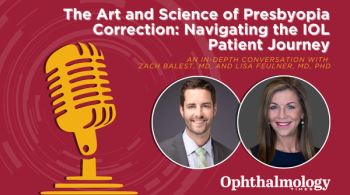
AAO: Headache, tired eyes with 3-D games may indicate eye disorder
Healthy children who consistently develop headaches or tired eyes or cannot clearly see images when playing 3-D games on handheld digital products may have a vision or eye disorder, according to the American Academy of Ophthalmology (AAO). ?If such problems occur, the [AAO] recommends that the child be given a comprehensive exam by an ophthalmologist,? the organization said in a statement.
San Francisco-Healthy children who consistently develop headaches or tired eyes or cannot clearly see images when playing 3-D games on handheld digital products may have a vision or eye disorder, according to the American Academy of Ophthalmology (AAO). “If such problems occur, the [AAO] recommends that the child be given a comprehensive exam by an ophthalmologist,” the organization said in a statement.
Children with amblyopia, strabismus, or other conditions that persistently inhibit focusing, depth perception, or normal 3-D vision will find it difficult to see digital 3-D images when playing games on handheld devices and may be more likely to experience headaches and/or eye fatigue when viewing the 3-D digital images, according to the AAO. These symptoms do not mean that 3-D digital products cause vision disorders, the statement said.
Several 3-D game device manufacturers have warned parents to prevent children aged less than 6 years from prolonged viewing of a device’s digital images to avoid possible damage to visual development.
Conclusive studies on the short- and/or long-term effects of 3-D digital products on eye and visual development, health, or function in children do not exist, nor do persuasive, conclusive theories on how 3-D digital products could cause damage in children with healthy eyes, according to the AAO.
Newsletter
Don’t miss out—get Ophthalmology Times updates on the latest clinical advancements and expert interviews, straight to your inbox.


















































.png)


